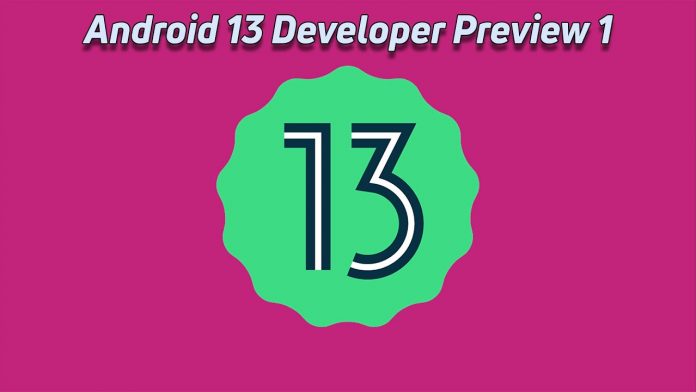Google has released the first developer preview for Android 13. Read further to know what is included, its features, and the supported devices.
Android 13 is on its way to hitting the market. Developers can experience the first look of Android 13 Developer Preview as it is officially out now. Google is keeping “Privacy, security, and developer productivity” at the heart while designing Android 13. Google made announced the release of the Android 13 developer preview on 11th Feb’22. The announcement came even while many phones including some high-end ones are still waiting for the Android 12 update. The New Android version was announced just a few weeks after the Android 12L update was released.
What is the Android 13 developer preview?
For those who aren’t aware of what developer preview is. Google releases developer preview before the full and stable operating system update. Android 13 Developer Preview 1 is meant for app developers. They use preview builds to design and modify their applications according to the new update guidelines. Users shouldn’t confuse developer previews with Beta builds. Developer previews are the early versions of the operating system and they can be unstable. Beta builds are more stable in comparison to developer previews. It means that the developer preview builds come with a lot of bugs and software issues. These bugs and software problems are later fixed. It happens in the process of developing the complete and final version of the operating system.
Important Note: Android 13 Developer Preview 1 is specifically meant for developers. It is not for the end consumers. We advise to download it only on a secondary device. And, the regular users need to wait for a stable update to release.
What does Android 13’s first developer preview include?
Android 12 brought many tweaks to the interface level. But, the Android 13 update will be different than Android 12. Android 13 seems to have been designed to improve the experience introduced by the Android 12 update. New features in Android 13 include upgraded theming options and privacy features.
Android 12 was a big visual update that introduced many tweaks to the interface level. However, we don’t expect the new Android 13 update to introduce a lot of visual changes. Material You isn’t limited to just Google Apps and it will be expanded to all apps. The developers have designed an icon to support the monochromatic colors. Now users will be able to rely on the themed icon feature from Android 12 in the future for all apps. It allows users to customize app icons based on their wallpaper and other theme preferences. As per Google, themed app icons will initially support Pixel devices. However, Google is working with other manufacturers to release the feature more widely.
Improved permissions and security
Android 13 is changing the way of handling permissions and security by the system a bit. It has a new system photo picker. It will allow users to share photos and videos with apps without them needing full access to device storage. This feature will keep user’s other media files protected while sharing the photos and videos. According to Google, this new feature is a standard and optimized way of securely sharing local and cloud-based photos.
Google plans on deploying this feature on all phones running Android 11 and later versions of the operating system.
NEARBY_WIFI_DEVICES
The update will bring some changes in the backend as well. Android 13 also offers a runtime permission feature called NEARBY_WIFI_DEVICES for apps. This feature manages the device’s connections to nearby Wi-Fi access points. It includes a better experience of multi-language support along with Wi-Fi permission. It will allow apps to discover and connect to Wi-Fi without needing location permission.
Now, apps will be able to discover and connect with nearby devices over Wi-Fi without allowing them access to user location. Per-app language preferences will allow users to choose a native language that is different from the system language. Google has developed a new API platform that apps can call to set users’ preferred language. The upcoming jetpack library will also have a similar API to extend the user experience.
The Quick Settings Placement API
Android 13 also comes with The Quick Settings Placement API. The Quick Settings Placement API in Android 13 allows app developers to prompt users to add custom time to the list of active Quick Settings tiles. It will prompt a new system dialogue to appear on the screen where you can add the title without quitting the program. It will also reduce the efforts to go to Quick settings to add the particular tile.
Google has revealed that they have improved hyphenation performance in Android 13 by up to 200 percent. It has resulted in a better text rendering experience. Hyphenation makes wrapped text easier to understand and allows the user interface to adapt to their needs.
Graphic rendering on Android 13 carries support for –
- Programmable RuntimeShader objects
- Behavior defined using the Android Graphics Shading Language (AGSL).
These features are implemented to enhance it over earlier versions. With the help of new features, developers will be able to use ripple effects, blur, and stretch overscroll on their apps.
More Features
To improve system-level experiences, Android 13 includes Core Libraries that are aligned with the OpenJDK 11 LTS release. Over time, Google Play system upgrades will make the Core Library improvements available to devices running Android 12 and higher.
Google is also expanding Project Mainline, which aims to help developers deliver faster software upgrades directly through Google Play. Instead of updating the complete operating system, the tech giant will be able to bring new features like picture picker and OpenJDK 11 to customers on previous versions of Android via upgrades to existing modules.
Android 13 continues to optimize the app experiences for large screen devices such as tablets, foldables, and Chromebooks while also considering Android 12L advancements.
Android 13 also provides easier testing and debugging support to developers. They can use toggles to force-enable or disable specific changes in the Developer options section.
Some of these features are available for developers through Android 13 first preview. They can expect other features to be available during the coming months.
Android 13 release schedule
Google has also provided some information about the release timeline for Android 13. It will help developers to make their apps ready by the time the new operating system is released. Google is due to release more Android 13 developer previews during Feb and Mar’22. It should start with beta releases in Apr’22. We expect a stable Android 13 update in June or Jul’22. However, it could take longer for the original equipment manufacturers to deploy the Android 13 update to their phones. Especially when many of them are struggling to launch a stable Android 12 update for the devices.
Google has decided to have just two developer preview releases of Android 13 this time. This is something new as the trend so far has been to bring three developer preview releases. For example, there were three developer previews of Android 12 last year. However, it might be to accelerate the rollout of the new Android update for end consumers.
Which devices will support the update and how to install?
Only selected Pixel series phones will get The Android 13 developer preview update. It includes Pixel 6, Pixel 6 Pro, Pixel 5a 5G, Pixel 5, Pixel 4a (5G), Pixel 4a, Pixel 4 XL, and the Pixel 4. Developers can also experience the update through the Android Emulator in Android Studio.
Google Pixel 3 Series
The Pixel 3 series is not compatible with the Android 13 Developer Preview 1. It will no longer receive any new Android version and security updates. The same is the case with Pixel 3a. The Pixel 3a and Pixel 3a XL both are also not compatible with the update. Both of these models are reaching the stage of end-of-software support in May’22.
Hence, the latest Android updates will not support the Google Pixel 3 devices anymore. And Android 12 will be the last update for these phones.
System Images
Google has made system images for all the eligible devices available for download. Also, developers can install the first developer preview of Android 13 on a computer through the Android Emulator in Android Studio. Google has released the Generic System Images (GSIs) as well for broader testing purposes.
Users can install Android 13 system images for the compatible devices using the below link: developer.android.com/about/versions/13/download
Interested users will also find the detailed installation instructions on the page. Users have the option to choose any of the two ways to install the images. They can install the images manually on their phones or use the Android Flash tool to install them. Stay tuned for the latest updates on similar topics.


